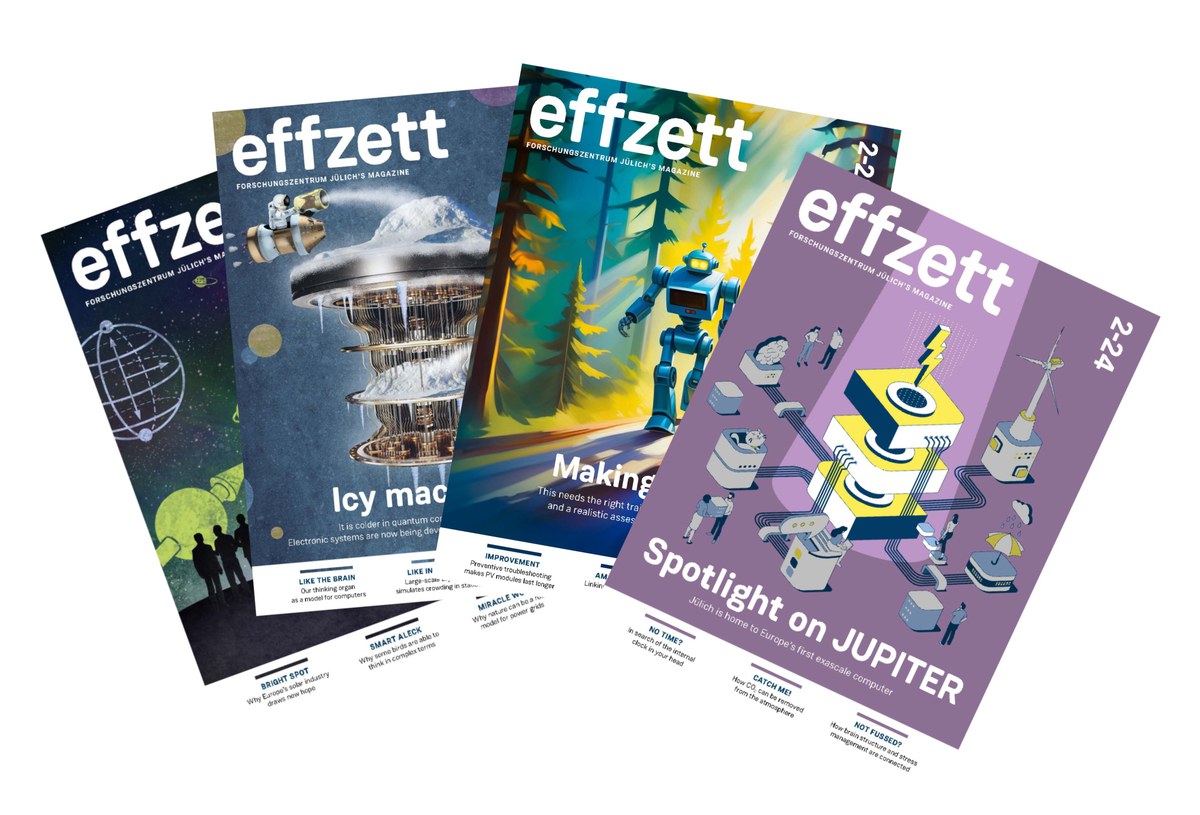Topic Energy scenarios
Germany has committed to achieving greenhouse gas neutrality by 2045. Detailed energy scenarios outline the ways of reaching this goal – and help to identify the best possible path.

Why Prof. Mirijam Zobel needs neutrons for her research and is campaigning for a new type of neutron source.
Computer chips generate a lot of heat and require a lot of energy for cooling. Electronics that operate at very low temperatures could reduce power consumption by up to 80 %. Prof. Qing-Tai Zhao explains how in this interview.


Whether it’s a field or a climate chamber, virtual representations of agricultural systems are being created on computers at Jülich. These digital twins not only optimize yields, but also promote climate protection.
Changes in the structure of the DISC1 protein in the brain can trigger mental illnesses such as schizophrenia. Researchers at Jülich have analysed the remodelling process and developed an approach to prevent it.


Anke Nölscher wants to understand how the atmosphere works – and how everything is interconnected. Her approach: learning new things, recognizing connections, and finding solutions together.
Food technologist Dr. Theresia Heiden-Hecht and her team from the Jülich Centre for Neutron Science (JCNS-4) use neutrons in their search for an even more sustainable milk substitute. They have their hopes pinned on sugar beet or alfalfa leaves.


Buckwheat was once a popular food staple in Germany before it nearly vanished from memory. Now it’s making a comeback – on dining tables and hopefully soon in our fields. But this resilient plant has even more potential.
Interested in other topics that have already been covered in effzett? Click here to access the research magazine archive. All articles published to date are available there and can be filtered by institute, topic and issue.

Can a person’s individual traits be determined from their brain? For a long time, this was unclear, partly because there were no suitable methods of investigation. Artificial intelligence and big data are now opening up new possibilities and have heralded a change of perspective in brain research.
The new showpiece on the Jülich campus is bright and colourful. The test stand will be used to develop more efficient and cost-effective electrolyzers for hydrogen production. The most important colour shimmers in the background: green. After all, the hydrogen in question is also green. Green means that it is generated using electricity from renewable sources only. The electrolyzers being tested are particularly suited to this task thanks to a special polymer membrane. What makes the project unique is that the electrolyzers in the test stand do not run on a laboratory scale but on an industrial scale. The facility is part of the DERIEL project, which is part of the national H2Giga flagship project.

